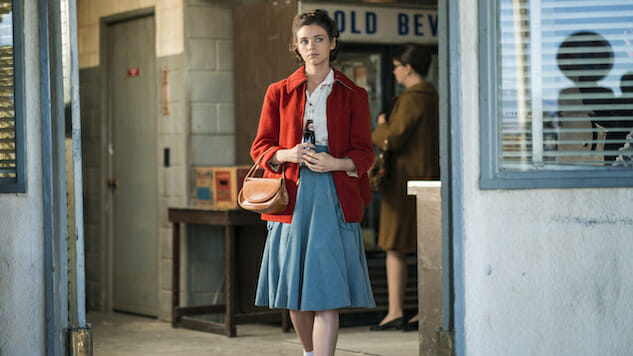Why Black Dahlia Victim Elizabeth Short Deserves Better Than the Hollywood Treatment
Photo: TNT
Nearly 75 years after her death, the story of Elizabeth Short’s disturbing and gruesome murder retains its fascinating power. In one of the rare instances in the annals of true crime in which the victim receives the star treatment, the mere mention of her alias, “Black Dahlia,” conjures up a warning about what can happen to wayward ingénues who leave the safety of their homes and families for the lights of Hollywood—don’t stray from the path, or you’ll get sawed in half and dumped on the side of the road!—and a captivating whodunit that, given how long the case has been cold, seems unlikely to bring any living person to justice.
Thanks to these factors, plus the number of armchair sleuths who’ve tried to solve Short’s killing over the years, there’s also plenty of false information and dead ends out there.
“Once you start unpacking it and unfolding it, it just goes on and on and on,” warns Larry Harnisch, a retired copy editor for the Los Angeles Times and an expert on the case. Unfortunately, he adds, however well-intentioned these investigations may be, Short herself “gets lost in the shuffle”: “She’s just sort of the fuel that makes the case go and, and folks want to turn it into a whodunit.”
Harnisch says Short’s narrative gets “forced into a spot” that adds to the lore surrounding more recent and famous murder victims, like Sharon Tate or Dorothy Stratten. (The narrative on the opposite coast, Harnisch jokes, is that “an impressionable young woman moves to New York and becomes a fashion writer.”)
Short was not an aspiring starlet seeking screen time, according to Harnisch. Rather, she was the product of a broken home during the Great Depression who lost her fiancé during World War II. Eventually, she ended up out west, where she was so poor that she was pouring melted wax in her molars to fix her cavities. For a while, she slept in an all-night movie theater in San Diego. She was only in Los Angeles for about six months, couch-surfing in various abodes, before she met her unimaginably awful end in January 1947: Short’s killer(s) severed her in two with surgical precision, drained her of blood, and washed her clean; her naked remains were discovered in the city’s then largely undeveloped Leimert Park neighborhood.
Harnisch’s guess is that Short’s goal was to find stability with a husband and a family. Instead, she has found posthumous fame in the form of cocktails at hotel bars, James Ellroy’s 1987 novel and its poorly reviewed film adaptation, a Mena Suvari guest spot on American Horror Story and, now, as the backdrop to TNT’s new limited series, I Am the Night.
Set mainly in 1950s Los Angeles, the miniseries—created by Sam Sheridan, with his wife, Wonder Woman’s Patty Jenkins, directing some of the episodes—uses the Black Dahlia case to look at one suspect in particular: George Hodel, an eccentric doctor who was of moderate interest to the Los Angeles Police Department at the time of the crime, but who is the prime suspect in the eyes of his son, retired LAPD officer Steve Hodel.
Whether Dr. Hodel murdered Elizabeth Short is debatable. Harnisch, for his part, considers this theory to be hogwash. He has waxed long on the many reasons why on his blog, and says now that Steve Hodel’s case “kind of fits in with the film noir attitude of this evil puppet master doctor who lives in this crazy house in Hollywood and has all these weird parties” Nor is Hodel’s son the only one of his descendants to write a tell-all. His granddaughter, Fauna, wrote her own memoir, One Day She’ll Darken, about her childhood in Nevada—where she was raised by a Black woman after being given up at birth under a cloud of scandal. I Am the Night is mostly inspired by the juiciest parts of that work.
“It was kind of this origami unfolding of evil that was her story and, yet, she maintained herself and became this wonderful, loving avatar of goodness and love,” Sheridan says of Fauna Hodel, whom he knew well and who died of cancer a month before the project began filming. “That’s what we were interested in exploring: When you find out the worst is true, what do you do then?”